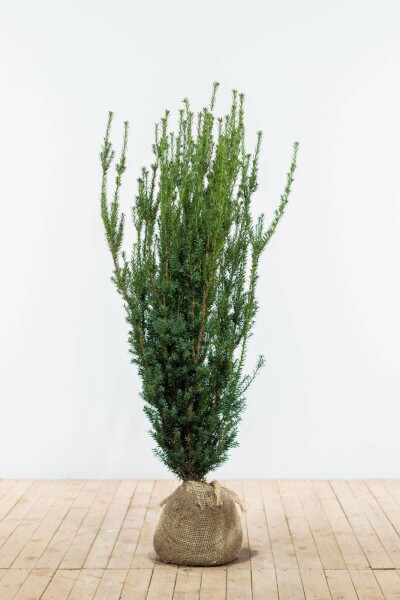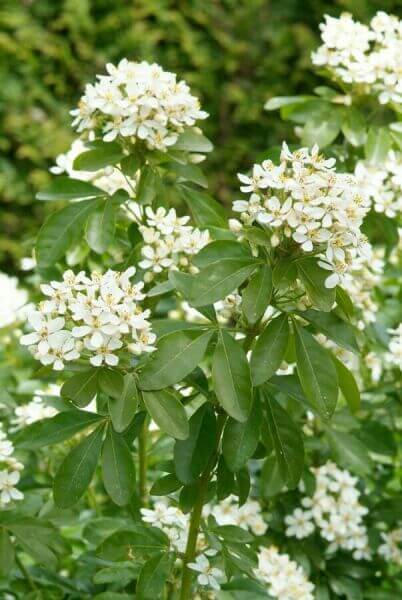Tall Hedging Plants For Maximum Privacy
Tall Hedging Plants For Maximum Privacy
Blog Article
Fast-growing Evergreen Hedge Plants
Boost your garden's attraction with lush hedge ranges such as Yew (Taxus), Thuja, Laurel, Photinia, and Bamboo, celebrated for their structural stability and environmental advantages.
Yew and Thuja provide evergreen coverage and winter season resilience, while Laurel uses rapid development and broad, aromatic leaves.
Photinia adds seasonal appeal with its lively red foliage, and Bamboo provides a low-maintenance, serene ambiance.
These hedges enhance air quality, reduce noise, and develop tranquil, private spaces.
Appropriate planting, spacing, and upkeep ensure vigorous growth and environmental consistency.
Explore how these lush varieties can raise your garden's appeal and well-being.
Key Takeaways
Transform Your Garden With Lush Hedge Ranges
- Select Yew for its thick, evergreen development and unparalleled longevity.
- Choose Laurel for its quick development and broad leaves, making sure fast privacy.
- Choose Photinia for its vibrant seasonal foliage, which turns a striking dark red.
- Use Bamboo for a low-maintenance, winter-hardy hedge with aesthetic appeal.
- Space plants 2-3 per meter and prune frequently for optimum development and health.
Popular Hedge Plants
When changing a garden with lush hedge ranges, it's essential to consider popular hedge plants such as Yew, Thuja, Laurel, and Photinia due to their unique qualities and benefits.
Yew (Taxus) is highly respected for its durability and thick, green growth, making it a prime choice for sustaining landscapes.
Thuja is kept in mind for its evergreen foliage and robust winter strength.
Photinia adds seasonal vibrancy with red leaves that darken in time, producing vibrant visual appeal.
Laurel provides quick development and aromatic, broad leaves, suitable for quick privacy.
Furthermore, Bamboo is an outstanding choice for ambiance, using a low-maintenance, winter-hardy alternative that improves the garden's aesthetic with its stylish, swaying canes.
These choices deal with a range of horticultural needs and preferences.
Advantages of Garden Hedges
Garden hedges provide a wide variety of benefits, making them an important addition to any landscape. These natural barriers are affordable to implement and supply substantial wind security, boosting air blood circulation and contributing to noise reduction. The dense foliage of hedges like Thuja and Beech ensures privacy by blocking visibility, creating a secluded and peaceful environment.
Hedges also play a vital role in microclimate regulation, offering a stable environment that promotes plant growth and decreases temperature changes. Their elaborate leaf structures filter toxins, improving air quality and adding to a healthier garden environment.
Moreover, hedges stand out in noise decrease, taking in and deflecting acoustic waves to lower ambient noise levels. This double functionality of offering both visual and acoustic personal privacy boosts the general harmony and aesthetic appeal of any garden.
Planting and Upkeep Tips
For a successful hedge, careful preparation of the planting location is vital. Guarantee the soil has correct pH and drainage to support strong root development.
Area the plants properly for the chosen species. Water the hedge regularly throughout its initial growth stage, changing as required with seasonal changes.
Execute a organized pest control and disease prevention technique, utilizing chemical or natural treatments when needed. Routinely check for aphids, mites, and fungal infections.
Apply mulch to keep moisture and reduce weeds. Seasonal pruning promotes thick development and air circulation, essential for plant health.
Following these guidelines will help you cultivate a dynamic, properly maintained hedge that boosts the appeal of your garden.
Spacing and Trimming Guidelines
Spacing and Trimming Guidelines
Proper spacing and trimming are essential for cultivating healthy, visually appealing hedges. Sufficient spacing ensures each plant receives sufficient nutrients, light, and airflow.
Follow these guidelines for optimal hedge maintenance:
- Spacing: Position hedge plants 2-3 plants per meter to encourage robust growth.
- Pruning Techniques: Regular pruning is important for preserving preferred hedge height and shape. Trim new growth in summer and cut back older wood throughout winter.
- Seasonal Care: Change cutting methods and schedules according to seasonal requirements to make sure plant health.
- Hedge Height: Frequently screen and trim to maintain the desired hedge height and achieve consistent looks.
Following these actions will guarantee your hedge prospers, improving both the appeal and functionality of your garden.
Picking the Right Hedge
Selecting the Right Hedge
Selecting the suitable hedge involves examining aspects such as mature height, foliage density, and environmental strength. Successful hedge plant choice needs understanding each types' growth attributes and site-specific flexibility.
For example, Yew (Taxus) uses outstanding longevity and thick growth, while Thuja is noteworthy for its winter resilience. Furthermore, thinking about upkeep requirements is essential; fast-growing types like Laurel or Privet demand routine trimming, whereas low-maintenance alternatives like Bamboo or Ivy might be more effective for those seeking very little upkeep.
Environmental factors such as soil type, light schedule, and moisture conditions must also direct the selection procedure. This mindful technique guarantees the picked hedges will prosper, providing both practical and aesthetic advantages to the garden landscape.
Delivery and Planting Suggestions
To ensure your hedge plants thrive, they must be delivered by specialized couriers and planted promptly upon arrival.
Follow these vital actions for successful planting:
- Soil Preparation: Enhance the soil with natural matter to enhance drainage and nutrient content.
- Planting Depth: Produce a trench twice the width and equivalent to the depth of the root ball.
- Watering Strategies: Water thoroughly after planting, keeping the soil consistently damp but not filled.
- Mulching: Use a layer of mulch to maintain moisture and suppress weeds.
Customer Support and Service
Provided the important function of prompt help in horticultural pursuits, our consumer support team is available six days a week through telephone, email, and social networks to provide skilled advice and swiftly deal with any concerns. Their dedication to quick response times ensures customer satisfaction by dealing with queries associated with plant health, ideal planting techniques, and maintenance schedules.

Availability
-------------------
Within 24 hours
This extensive support group, strengthened by an excellent 9.3/ 10 consumer rating, highlights our commitment to enhancing the gardening experience for each client.
Often Asked Concerns
The Length Of Time Does It Consider Hedge Plants to Develop?
Hedge plants normally need one to 3 years to end up being completely developed, with the precise period differing by species and growing conditions.
Effective care during this critical period is vital for robust development. Consistent watering, vigilant weed control, and proper fertilizer application are essential in promoting strong root development.
For example, fast-growing types like Laurel may develop quicker, while slower-growing ranges such as Yew may take longer. Diligent maintenance accelerates the establishment procedure, leading to healthy and thick hedges.
What Are the very best Hedge Plants for Personal Privacy?
The concern of the very best hedge plants for privacy involves evaluating evergreen and deciduous alternatives.
Evergreen hedges like Thuja, Laurel, and Cypress supply year-round protection, guaranteeing continuous personal privacy.
In contrast, deciduous hedges such as Beech provide seasonal personal privacy, shedding leaves in cooler months.
Key maintenance ideas for privacy hedges include routine trimming, fertilizing in spring, and proper spacing-- typically 2 to 3 plants per meter.
Additionally, consistent watering and diligent weed elimination are essential for promoting healthy, dense development.
Can Hedge Plants Draw In Wildlife to My Garden?
Yes, hedge plants can bring in wildlife to your garden by offering essential benefits like shelter, food, and nesting sites, consequently boosting regional biodiversity. Yew, holly, and laurel are exceptional for drawing in birds, while ivy supports a range of insects.
Nevertheless, it is essential to keep in mind that there are some drawbacks, such as increased upkeep to manage insects and routine upkeep. Thoroughly selecting and preserving hedge ranges can help stabilize these advantages and drawbacks, ultimately cultivating a sustainable and dynamic environment in your garden.
Are There Any Flowering Hedge Plants Available?
Yes, there are flowering hedge plants readily available that can enhance the charm of your garden.
For instance, Elaeagnus, also referred to as Olive Willow, here produces aromatic white flowers in the fall, adding a touch of beauty.
Photinia, another popular option, showcases dynamic red leaves that grow into a rich green, producing a vibrant visual result throughout the seasons.
To ensure these plants flourish, it's necessary to practice correct pruning techniques and seasonal maintenance, such as trimming brand-new development in the summer season and cutting down in the winter.
These measures will help preserve the health and aesthetic appeal of your flowering hedges.
How Do I Prevent Insects in My Hedge Plants?
To avoid insects in hedge plants, use natural bug control approaches and keep correct hedge care. Present beneficial pests like ladybugs, which victimize damaging bugs, to develop a well balanced environment.
Frequently examine your hedges for indications of invasion and immediately get rid of any afflicted parts to avoid the spread. Guarantee the health of your hedges by applying balanced fertilizers and providing adequate water.
Make use of mulching to maintain soil wetness and appropriate spacing to reduce plant tension and promote robust development. These practices jointly help in reducing pest issues and keeping a healthy hedge.
Conclusion
In essence, picking the best hedge varieties such as Yew, Thuja, and Laurel can transform any garden into a serene sanctuary. These plants offer year-round greenery, boost aesthetic appeal, and offer useful advantages like noise decrease and wind protection.
Correct planting methods, accurate spacing, constant watering, and seasonal trimming are vital for optimum growth.
Trustworthy delivery services and skilled consumer support make sure a seamless experience from purchase to planting, making it simpler than ever to raise your outdoor area.
Garden hedges provide a wide variety of benefits, making them a valuable addition to any landscape. These natural barriers are cost-efficient to execute and provide substantial wind security, enhancing air blood circulation and contributing to noise decrease. The dense foliage of hedges like Thuja and Beech guarantees privacy by obstructing exposure, creating a serene and secluded environment.

Pruning Techniques: Regular pruning is essential for keeping wanted hedge height and shape. Trim new development in summertime and cut back older wood during winter season.
Report this page